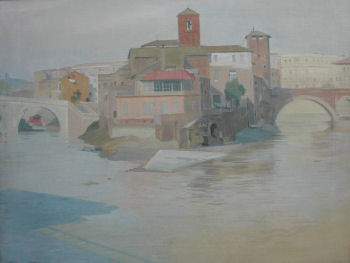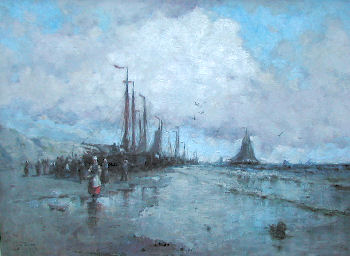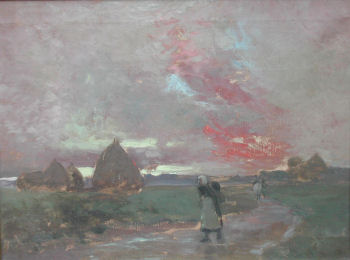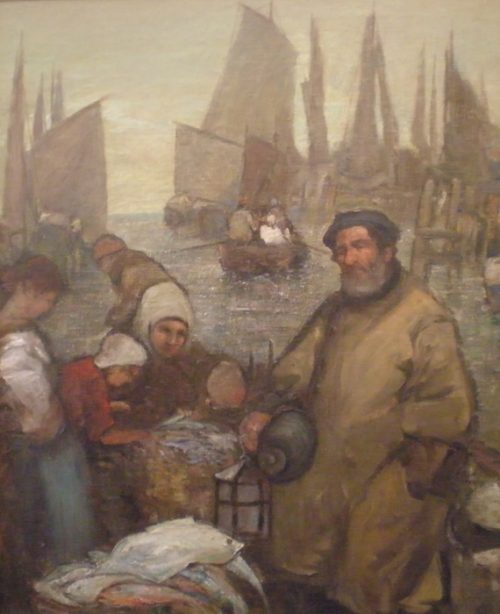Description
Herbert James Gunn R.A., P.R.P. 1893 – 1964
Sir Herbert James Gunn was born in Glasgow in 1893. He was educated at the Glasgow School of Art in 1909 and the Edinburgh School of Art from 1910 – 1911. He then left his native Scotland and went to Paris where he studied at the Acaemie Julian under J.P. Laurens and with Wm. John Wainwright and William Brakespeare. He was especially influenced by the popular teaching of the time painting ‘en plein air’ although this was to be reflected mostly only in his beach scenes. The popular use of the square brush technique also had an effect on his early portrait work as can be seen in his famous painting of ‘Symphony of Gold’ a portrait of the artists wife Gwen dressed as a 1920’s flapper in 1920. He studied at Julians from 1911 – 1912 and continued to work in Paris until the outbreak of the first world was when he returned to England on the eve of the outbreak of hostilities. After seeing active service in France he again returned to London and it is recorded that by 1920 he had set himself up in a studio where he became a highly successful society portrait painter.
His most important portrait was undoubtedly the commission to paint Her Majesty Queen Elizabeth II in her coronation robes in 1953. It was this same year he was made an Associate of the Royal Academy and President of The Society of Portrait Painters. He became a full RA in 1961. He was knighted in 1963 for services to art.
Although best known as a portrait painter who not only painted the rich and famous but was, in essence, a recorder of style and fashion during his lifetime. The portraits he painted of his female sitters are very evocative of the time and period they were painted in and serve as a record of the progress of fashion during the 20th Century.
In 1928 – 1929 he travelled to Italy where he produced a body of work which reflected his love of painting outside. These paintings have a high degree of finish and are, for the most part, studies in Italian architecture and light and are a wonderful exercise in tonality – something he had been taught by Julian some 15 years earlier. The finish in these paintings is of a much smoother and finer line than his beach scenes which enabled him to create a completely different atmosphere and give a feeling of peace and tranquillity to his work that he does not show in his beach scenes. They have a more ‘ethereal’ quality that does not require the inclusion of figures to make it come alive. He has painted the mood, the warmth and the antiquity of the buildings and it is these images that make the painting speak.
Exhibited at the R.A., R.S.A., Paris Salon and provinces. In 1939 he won a gold medal at the Paris Salon. His paintings are in museums worldwide but his finest work is in the Royal Collection and the National Portrait Gallery, London. He ranks as one of Scotland’s greatest painters and is on an equal footing as such luminaries as Sir John Lavery, Sergeant and Orpen.






